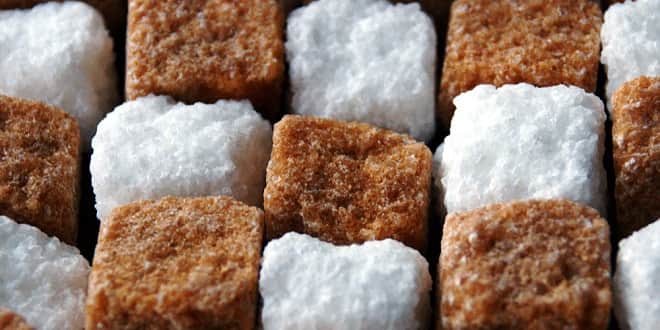Production Process in Sugar Industry
PRODUCTION PROCESS IN SUGAR INDUSTRY
Presented by:
M.Mustafeez ur Rehman & Wasif Naeem.
SUGAR
-
Sugar is a vital ingredient in most of out daily consumption articles. For example: Soft drinks, juices, tea, biscuits, sweetmeats, bakery items ,deserts, etc.
-
It is a vital need more than a want to our society.
INTRODUCTION
-
The Second Largest agro based industry after Textiles.
-
Pakistan is an important cane producing country and is ranked fifth in world cane acreage and 15th in sugar production.
-
Its share in value added of agriculture and GDP are 3.4 percent and 0.7 percent, respectively
HISTORY
-
During the year 1997-1998 there were 75 sugar mills in the country and it produces.
-
Sugarcane is grown on over a million hectares and provides the raw material for Pakistan’s 75 sugar mills.
-
Dewan Sugar Mills Limited established as a public limited company in 1982 is one of the largest sugar mills of Pakistan having a cane crushing capacity of over 9,000tons per day.
Cont….
MANUFACTURING PROCESS
-
Cleaning
-
Slicing
-
Juice extraction pressing
-
Purification
-
Evaporation
-
Crystallization
-
REFINERY
-
SEPARATION AND PACKAGING
CLEANING
-
After the cane arrives at the mill yards, it is mechanically unloaded, and excessive soil and rocks are removed.
-
The cane is cleaned by flooding the carrier with warm or by spreading the cane on agitating conveyors that pass through strong jets of water and combing drums.
-
At this point, the cane is clean and ready to be milled.
GRINDING/ SLICING
*After the cleaning process, a machine led by a series of rotating knives, shreds the cane into pieces. This is known as “grinding.“
* During grinding, hot water is sprayed on to the sugarcane to dissolve any remaining hard sugar. The smaller pieces of cane are then spread out on a conveyer belt.
JUICE EXTRACTION
*The shredded pieces of sugarcane travel on the conveyer belt through a series of heavy-duty rollers, which extract juice from the pulp.
* The pulp that remains or “bagasse” is dried and used as fuel. The raw juice moves on through the mill to be clarified.
PURIFICATION OF JUICE
*The juice from the mills, a dark green color, is acid and turbid. The clarification (or defecation) process is designed to remove both soluble and insoluble impurities (such as sand, soil, and ground rock) that have not been removed by preliminary screening.
* The process employs lime and heat as the clarifying agents.
*Cont…
-
Carbon dioxide and the milk of a lime are added to the liquid sugar mixture and it is heated to the boiling point, as the process of clarifying begins.
-
As the carbon dioxide travels through the liquid it forms calcium carbonate, which attracts non-sugar debris (fats, gums, and wax) from the juice, and pulls them away from the sugar juice. The juice is then pushed through a series of filters to remove any remaining impurities.
*Cont…
*The muds separate from the clear juice through sedimentation. The non-sugar impurities are removed by continuous filtration.
* The final clarified juice contains about 85 percent water and has the same composition as the raw extracted juice except for the removed impurities.
EVAPORATION
-
To concentrate this clarified juice, about two-thirds of the water is removed through vacuum evaporation.
-
Generally, four vacuum-boiling cells or bodies are arranged in series so that each succeeding body has a higher vacuum (and therefore boils at a lower temperature).
-
The syrup leaves the last body continuously with about 65 percent solids and 35 percent water.
CRYSTALLIZATION
-
The crystallization process takes place in vacuum pans which boil the juice at lower temperatures under vacuum.
-
When the juice concentrates it is ‘seeded’ with tiny sugar crystals which provide the nucleus for larger crystals to form and grow. When the crystals reach the desired size the process is stopped.
-
The remaining mixture is a thick mass of large crystals, which is sent to a centrifuge to spin and dry the crystals. The dried product is raw sugar, still inedible.
REFINERY
-
Raw sugar is transported to a Cane Sugar Refinery for the removal of molasses, minerals and other non-sugars, which still contaminate the sugar. This is known as the purification process.
-
Raw sugar is mixed with a solution of sugar and water to loosen the molasses from the outside of the raw sugar crystals, producing a thick matter known as “magma.”
*Cont…
-
Large machines then spin the magma, which separate the molasses from the crystals. Crystals are promptly washed, dissolved and filtered to remove impurities.
-
The golden syrup which is produced is then sent through filters to remove the color and water. What’s left is a concentrated, clear syrup, which is again fed into a vacuum pan.
SEPARATION AND PACKAGING
*Once the final evaporation and drying process is done, screens separate the different sized sugar crystals. Large and small crystals are packaged and shipped, labeled as white, refined, sugar.
CONCLUSIONS
-
Sugar industry has a potential to achieve heights in Pakistan if major steps are taken into consideration in this regard.
-
Sugar industry being the second largest agro based industry faces a lot of problems and if steps for its betterment are not taken this industry can collapse which will result in importing sugar from foreign countries and would eventually result in an increase in the trade deficit.
-
Other than sugar we can diversify and produce Ethanol which has been proved to be very helpful in developing economies and ease our import bill.
…




